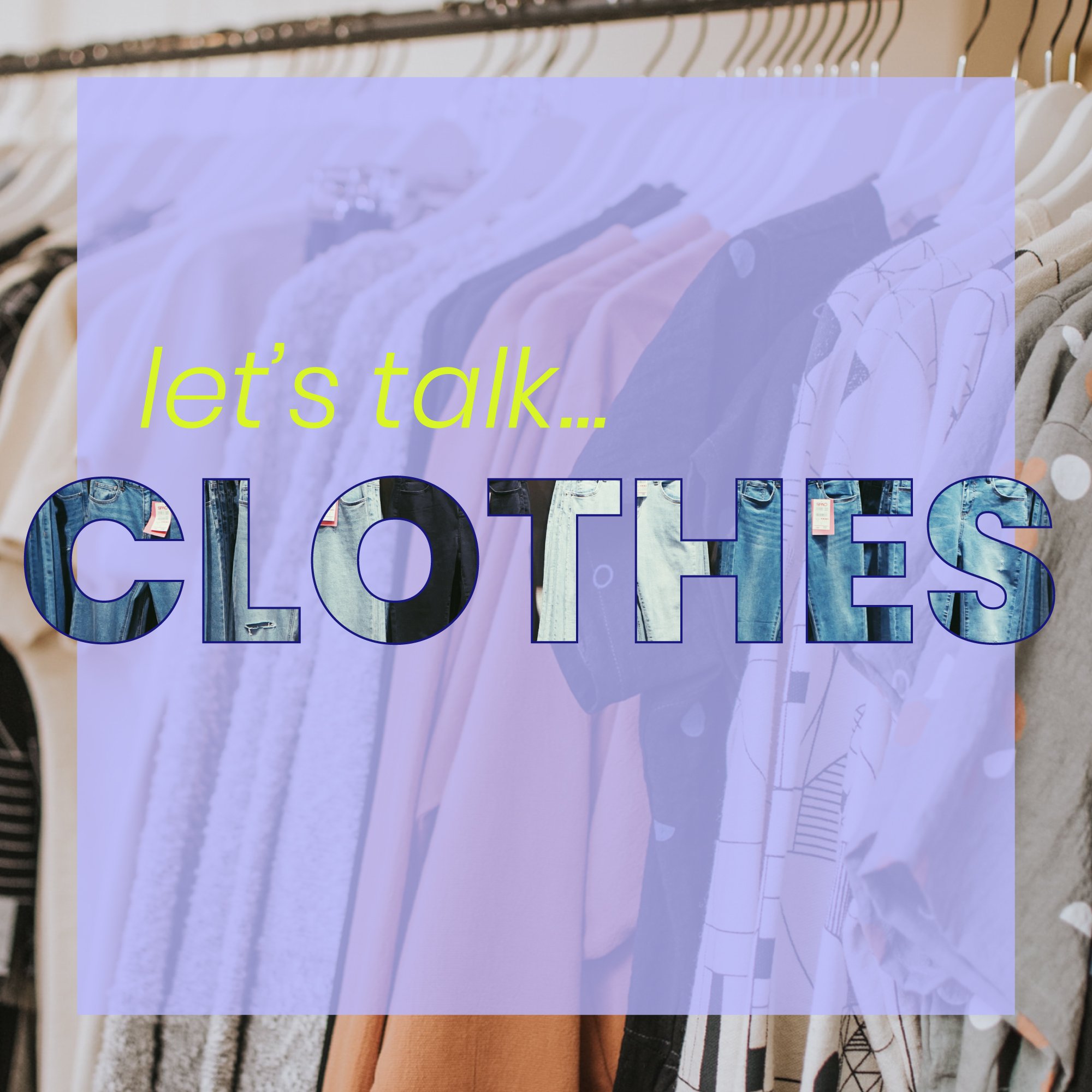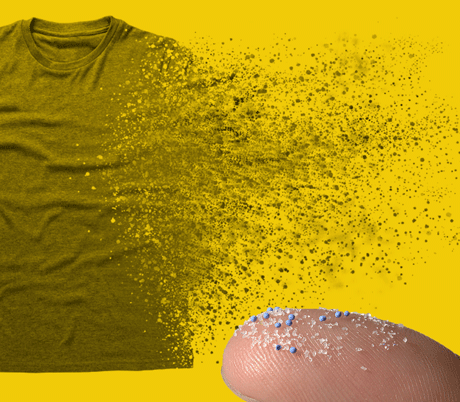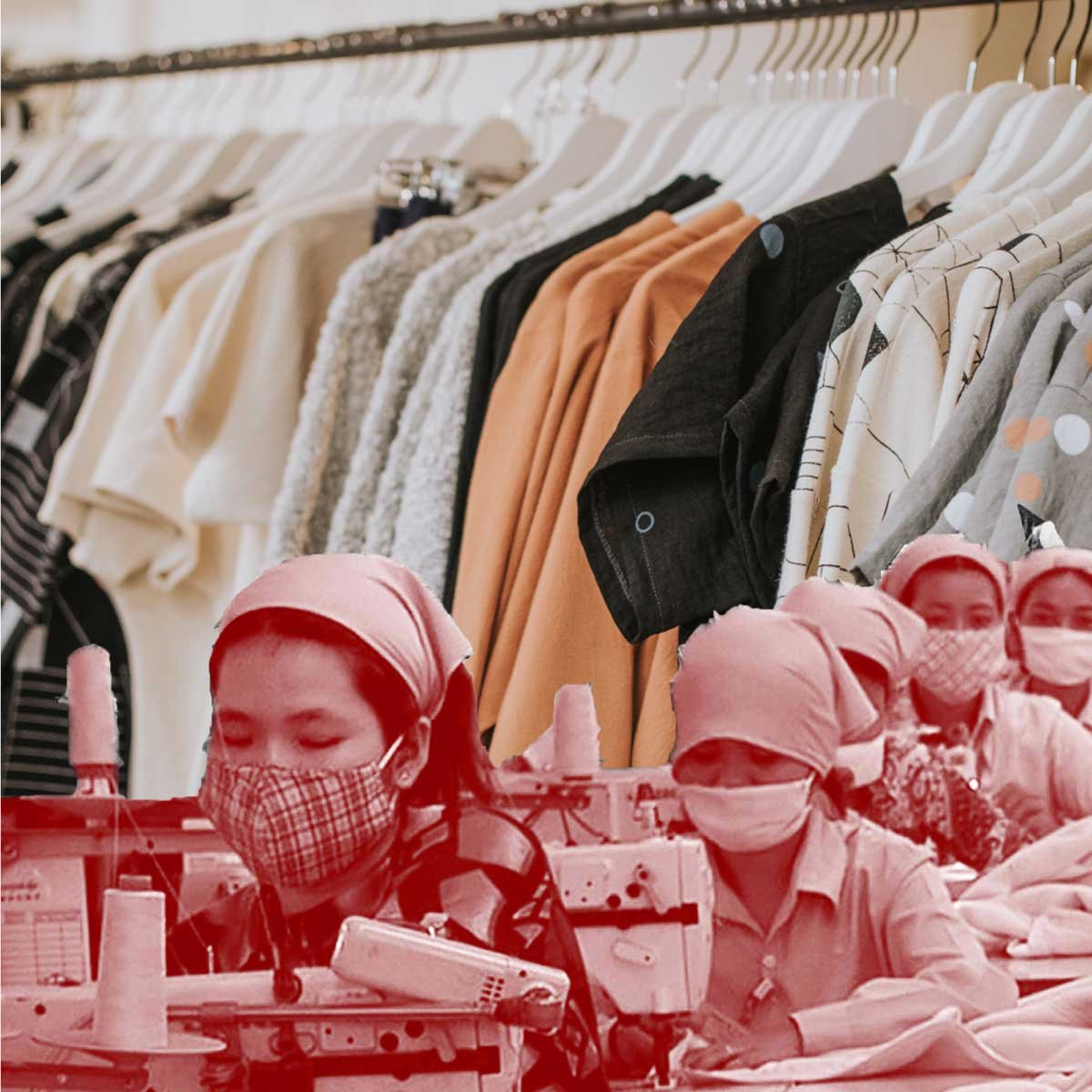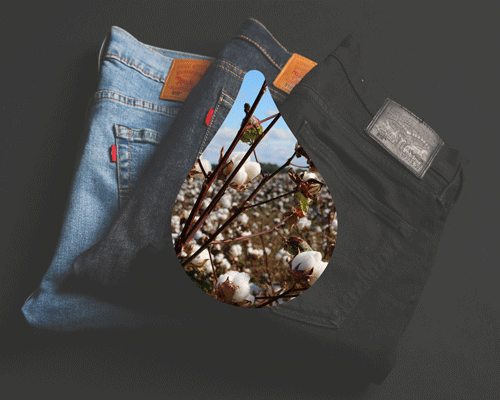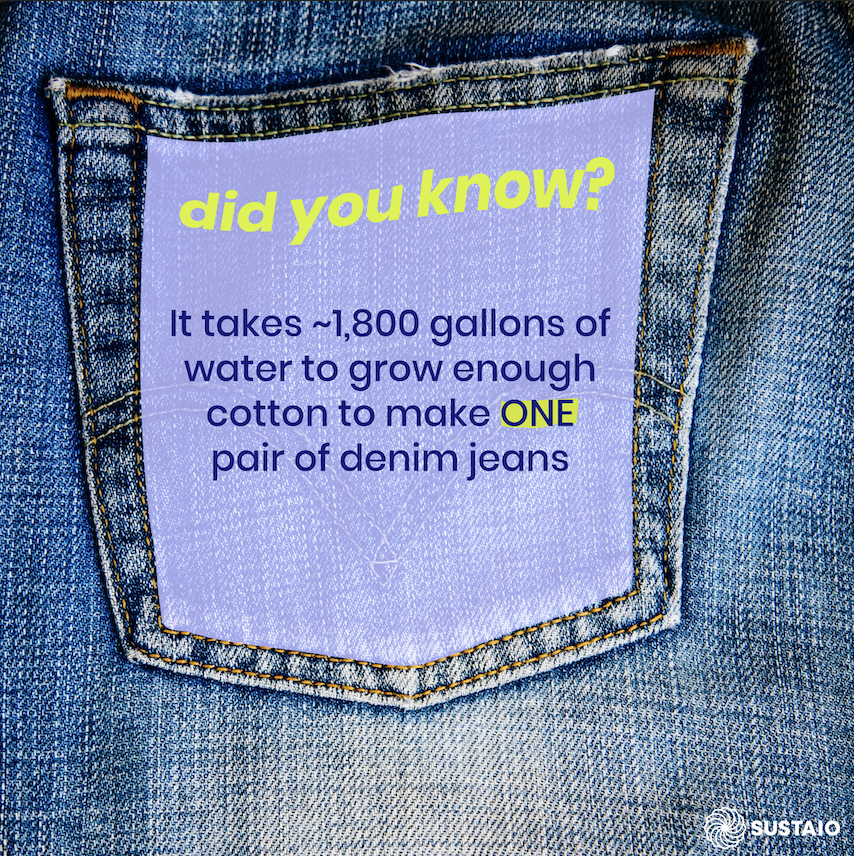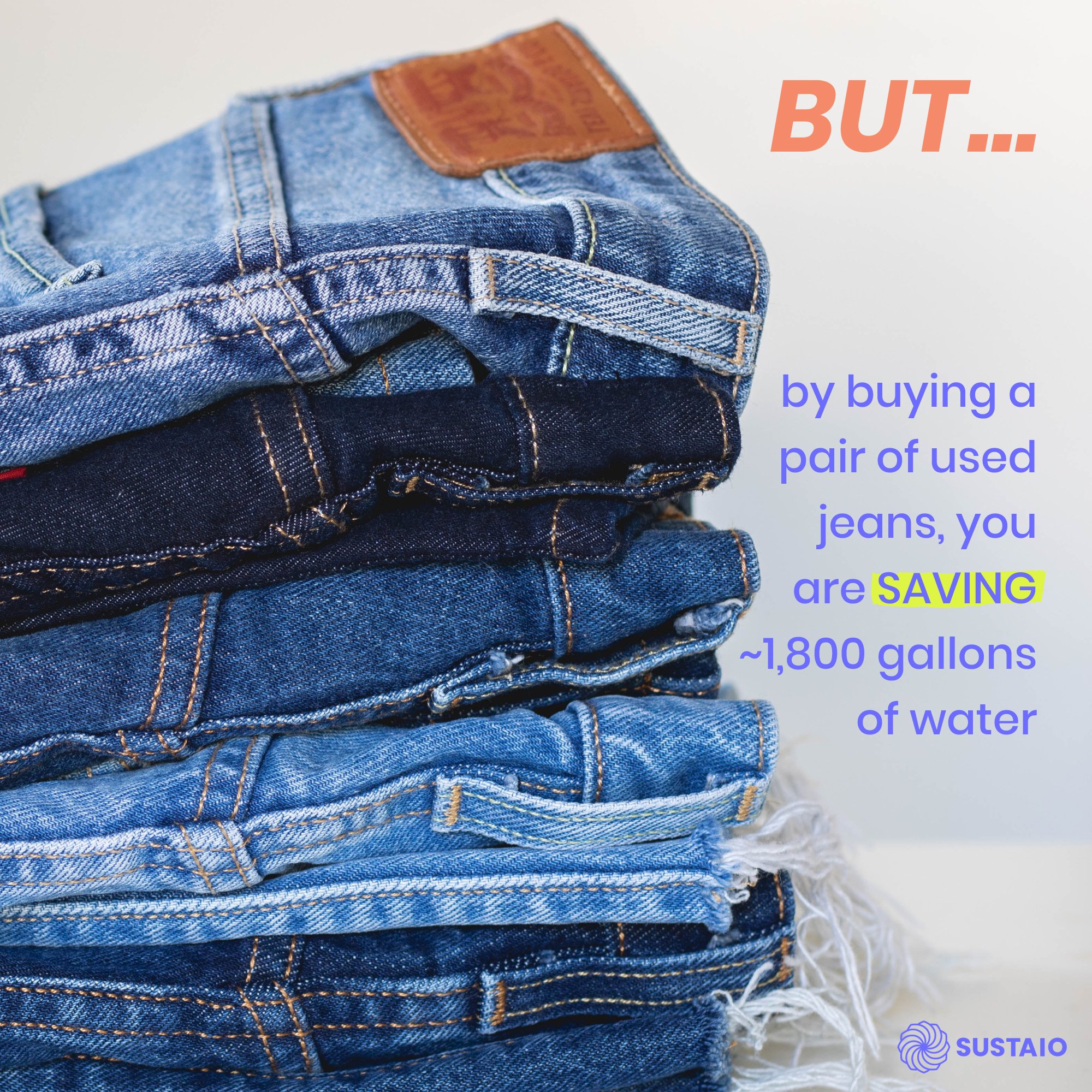Impact of Clothing
Clothings interconnected impact on people & planet
The fashion industry is a $2-3 trillion dollar industry notorious for its unsustainable practices. Practices that affect all of us! For starters, it’s responsible for a whopping 10% of the annual carbon emissions—of the whole planet...
Microplastics are a massive issue. The fashion industry is responsible for dumping half a million tons of plastic microfibers into the ocean every year. These microplastics shed from any of your clothing that has synthetic fibers like polyester, nylon or spandex. Those plastic bits and pieces run from your washing machine through the water system to rivers and oceans. Then the microplastic becomes toxic food for the fish and eventually, back to you, working their micro-selves up the food chain. If you're buying clothes made of synthetic materials, go for recycled synthetic fibers, aka recycled plastics. Companies are popping up (see resources below) that are reusing plastics that have ended up in a landfill or ocean, and the production actually requires very little water.
Next issue: Fast Fashion is an example of short-term thinking. Très Uncool. Taking something from idea to product in record time is good for your pizza order, but not your shirt. The temptation of “buy now” is very real, but we must replace it with “will I wear this tomorrow? More than 10x?” This can be a MAJOR waste reduction for you. Today, we purchase 60% more clothes than we did in 2000 and we keep the clothes for half as long. That amount of waste is ‘So, last season.’
Ever thought about the story of the shirt on your back...like the "before you" chapter? Where did the raw materials come from? Whose hands sewed it together? Modern day slavery is a very real thing in the fashion industry, i.e., the people that make these cheap, one (wear) and done clothes. The fast-fashion clothing factories (sweatshops) requires workers to produce around the clock in horrible conditions, that give them long term health effects and pay little to nothing if at all and more.
Clothing comes from plants...and oil
Let’s start with plants. Plants need land, water, and other resources, often including chemicals, to grow at the scale we need them to. Someone has to farm these plants, then someone else has to manufacture these plants into fabrics. These fabrics then get sold to a clothing manufacturer to make the clothes. Then somebody moves the clothes. Then somebody sells the clothes. Then you buy the clothes...or do you?
Now let’s take a quick think on oil. If you’re thinking, “How can oil make clothing?,” you are not alone. You know those yoga pants we all love. Well, it’s likely they’re produced using synthetic fabrics like: polyester, spandex, rayon, nylon, all of which come from plastic—and plastic comes from derivatives of fossil fuel, oil.
What materials are you wearing on your body right now…?
Something that most of us probably wouldn’t know the answer to.
There are natural fiber materials such as cotton, silk(silkworm), linen(flax). Animal byproduct materials like cashmere(goats), wool(sheep), suede(lamb), leather(cows and other animals). Then there are the synthetic materials such as nylon(petroleum-based), rayon(wood-pulp), acrylic(polymer), and polyester(petroleum-based).
There are many more but we’re just covering the most common ones here, not the fancy pants blends and weaves… sorry Toile de Jouy, #basic.
Which of the above would you say is the planet smart choice?
A rational guess would probably have chosen natural fiber materials. But fabric is oh, so much more complicated than that. The processes of making some natural fibers is more chemical and water-intensive than their synthetic alternatives. Just because something is a natural fiber doesn’t mean it was produced organically. Eh ehhmm...conventional cotton. Hence why buying 'organic' clothing is actually meaningful, impactful practice— it’s not just ‘eco-garble’.
Impact of Fabric
Cotton, that “simple,” “natural,” and abundant material is actually one of the most energy and chemical-intensive. Translation = Unsustainable, because of the environments it affects and the number of resources used.
Guess how many gallons of water go into making a single pair of jeans?
Answer: 999 gallons (3,781liters)! That includes creating the denim from cotton to delivering the jeans to the store. Exhausting the earth’s supply of water—check!
Once upon a time satin (not satan) was made from silk. Nowadays, our blends have blends! Today, your satin may be cotton-silk, silk-polyester, polyester-nylon, etc. The more a fabric has to blend and weave, the more energy and resources used.
Petroleum-based fabrics, Nylon, Polyester, Spandex, etc., are bad because they source fossil fuels not only for the energy that it takes to produce the fabric (i.e., electricity) but it also demands petroleum for the fabric itself. Additionally, petroleum-based fabrics materialize into shedding plastics which then leave microplastics all over the place, especially in the ocean.
Some good news
There’s a new(ish) + good thing in fashion: The sharing economy. Renting clothes through a subscription is a good example of a circular supply chain. The company is financially incentivized to take care of that product and get as much out of it as possible. Instead of making more and filling up landfills, clothes can be re-used.
Even more uplifting, there are synthetic ecologically sound fabrics being innovated. There is Tencel, rayons ‘eco’ twin using ⅓ as much water and non-toxic recyclable solvents (ingredients) meaning no harm done to its factories surrounding environments.
Ever heard of pineapples? Of course you have, and now a fabric, Piñatex, is being made out of pineapple leaves. Serving as a leather replacement, this innovative fabric has no need for new farms because it sources the leaves from already existing pineapple farms while using ZERO toxic chemicals to produce, and all finished in a closed-loop system.

